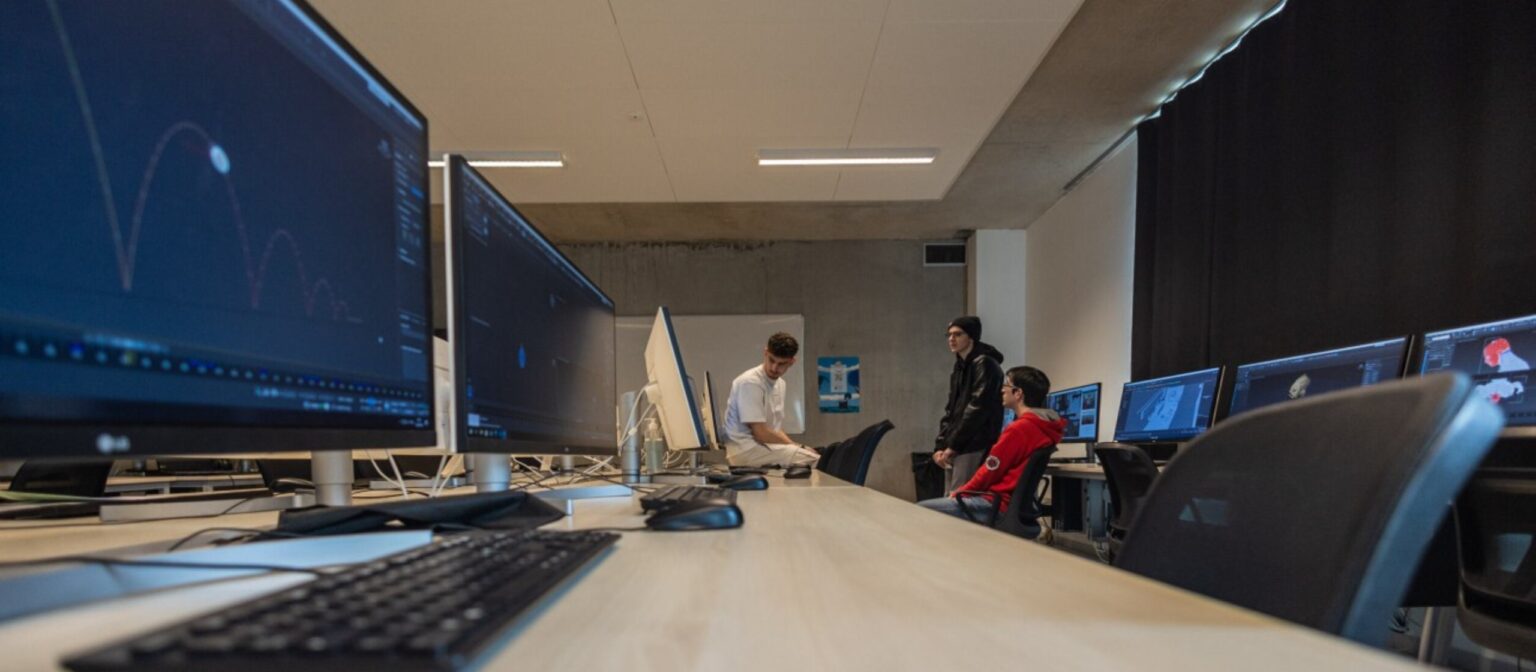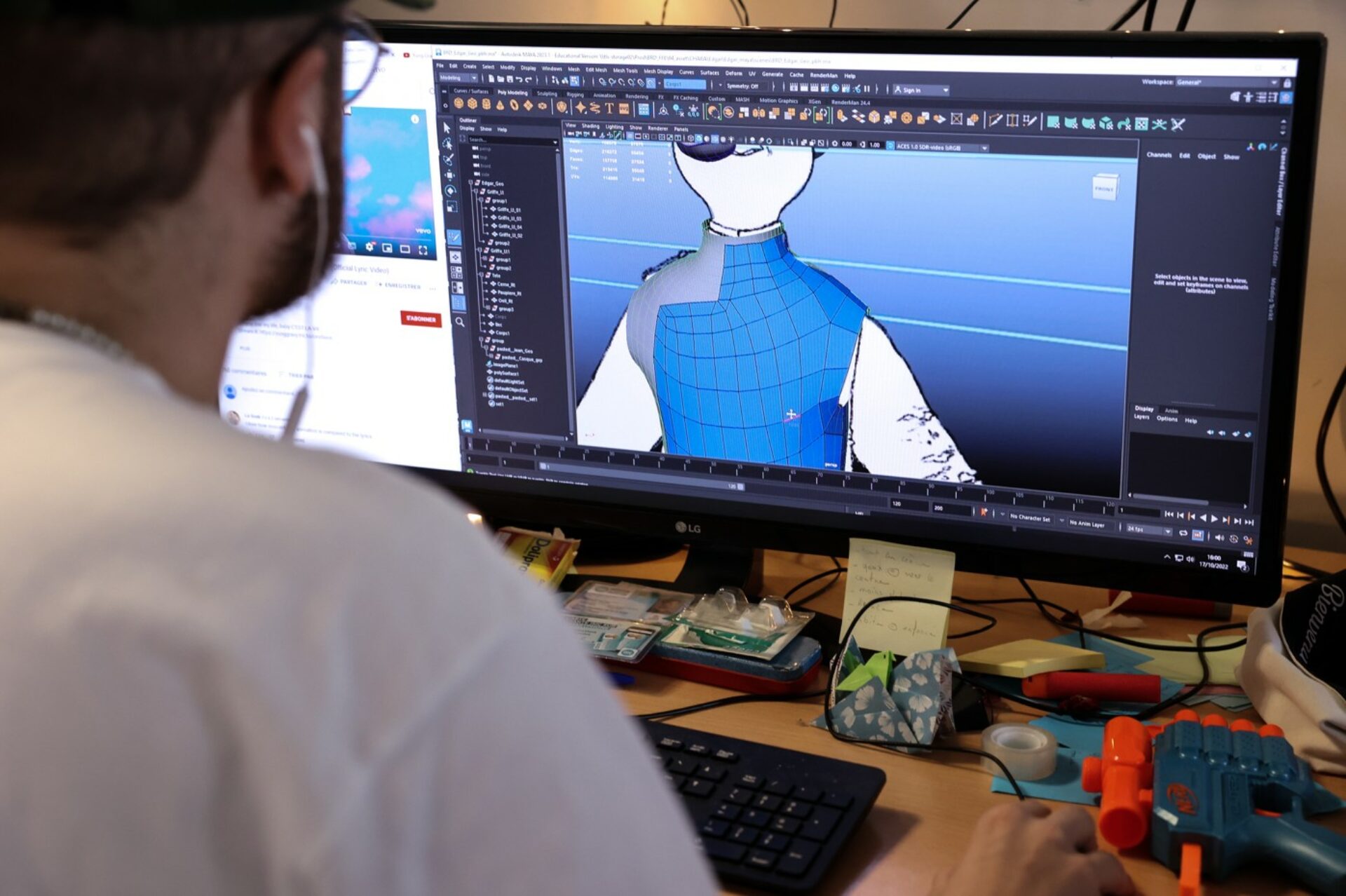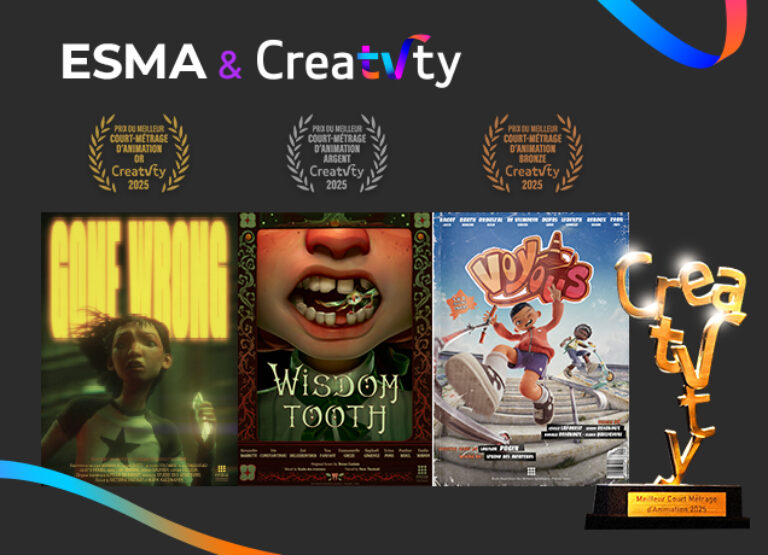
- Published 05.13.2025
- type Thematic news items
- Training 3D Animation & FX
The 3D animation industry is growing exponentially, driven by technological advances and increased demand in a variety of sectors. Whether for the cinema, video games, advertising or virtual reality, professional opportunities are multiplying. ESMA explores the changing market, the most sought-after profiles and the future prospects for 3D animators.
Market trends
An industry in full expansion
3D animation has established itself as an essential pillar of the entertainment industry. Since the 2000s, animated films have been a resounding success, with franchises such as Toy Story, Frozen and Avatar pushing back the boundaries of technology. Today, demand extends far beyond the cinema:
- Video games: Increasingly realistic, they require talented animators to bring characters and environments to life.
- Animated series: platforms such as Netflix and Disney are investing massively in animated content.
- Advertising and marketing: Companies are increasingly using 3D animation for immersive, interactive advertising.
Diversification of application sectors
Far from being limited to entertainment, 3D animation can also be used in :
- Architecture: 3D visualisation is used to present projects before they are built.
- Medical: Animations are used to illustrate surgical procedures or biological phenomena.
- Virtual and augmented reality: The boom in immersive technologies is creating new opportunities for animators.
The impact of new technologies
Artificial intelligence, motion capture and real-time rendering engines (such as Unreal Engine) are transforming the way animators work. These innovations are reducing production times and opening up new creative perspectives.
Profiles sought by companies
Specialists rather than generalists
As production pipelines become more complex, studios are increasingly looking for specialist profiles:
- Character animator: Expert in movements and facial expressions.
- 3D Rigger: Responsible for setting up skeletons and animation controllers.
- 3D Modeller: Responsible for creating detailed objects and characters.
- Lighting and shadingartist: Specialist in lighting effects and realistic rendering.

Proficiency in essential software
Recruiters require excellent knowledge of industry tools, including:
- Autodesk Maya: The benchmark for animation and rigging.
- Blender: Increasingly popular thanks to its flexibility and free availability.
- Houdini: Essential for complex visual effects.
- Unreal Engine and Unity: Essential for real-time animation and video games.
Technical skills and soft skills
Beyond technical skills, employers value:
- The ability to work in a team: 3D production is a collaborative effort.
- Adaptability: Pipelines evolve quickly, so you need to be able to adapt to new technologies.
- Communication: An animator must be able to explain their artistic and technical choices.

Future prospects
The 3D animation industry is currently going through a significant crisis, marked by a significant contraction in the market since 2023-2024. This slowdown follows a period of continuous growth, which has put several major companies in the sector in difficulty, with some even going out of business.
Causes of the crisis
Several factors have contributed to this situation. The writers’ strike in Hollywood in 2023 led to delays and cancellations of projects, with a knock-on effect on related sectors such as animation and visual effects. In addition, the reduction in the tax credit in Canada has made the region less attractive for productions, redirecting projects to other territories.
At the same time, the rapid expansion of the market during the COVID-19 pandemic led to saturation, followed by a drastic drop in orders from streaming platforms and TV channels. The platforms, in particular, moved from a market conquest phase to a profit-making phase. Finally, an influx of new entrants into a now contracted market has exacerbated competition.
Cyclicality and prospects for recovery
Historically, the animation industry has gone through cycles of growth and recession. Despite the current crisis, industry professionals remain optimistic about a recovery. Analyses suggest that, as in previous crises, the market could rebound by the end of 2025-2026.
In short, although the 3D animation industry is going through a difficult period, its cyclical nature suggests that there are prospects for recovery in the medium term.
Steadily rising demand
The 3D animation market continues to grow, with an explosion of productions on streaming platforms. What’s more, the rise of immersive technologies is opening up new opportunities, particularly in :
- Virtual and augmented reality.
- Real-time animation for video games and cinema.
- Integrating artificial intelligence into 3D creation.
The rise of remote working
With the digitalisation of the sector, more and more 3D animators are working on a freelance or telecommuting basis. Studios are hiring talent from all over the world, offering artists greater flexibility.
Beware, however, of compliance with the employment code: freelancing can be done for a foreign animation studio, but not a French one. In that case, you will need to use contracts of the CDDU (intermittent) or CDI (permanent) type, which offer greater protection for artists’ rights.
The importance of ongoing training
Regular training in new techniques and tools is essential if you are to remain competitive. Online training and tutorials enable presenters to improve their skills and adapt to changes in the market.
Conclusion
3D animation is a booming sector, offering many opportunities for specialist artists. However, to stand out from the crowd, it is crucial to master the industry’s tools, develop cutting-edge technical skills and be able to adapt to technological developments. The future of 3D animation looks promising, driven by innovation and the diversification of fields of application.





